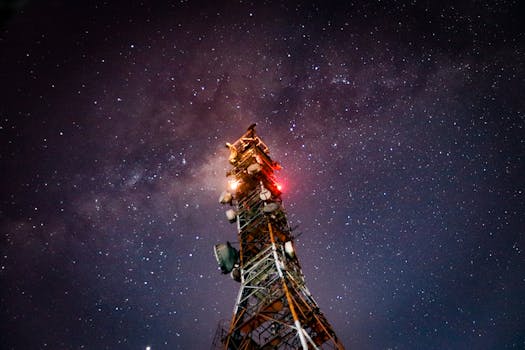
MEO Satellites: Revolutionizing Global Communication with Medium Earth Orbit Technology
MEO satellites, or Medium Earth Orbit satellites, are a type of satellite that operates in a medium-altitude orbit, typically between 2,000 and 36,000 kilometers above the Earth’s surface. This orbit is higher than Low Earth Orbit (LEO) satellites but lower than Geostationary Orbit (GEO) satellites. MEO satellites are designed to provide a unique combination of benefits, including global coverage, high-speed data transfer, and low latency, making them an attractive option for a wide range of applications, from mobile communications to navigation and Earth observation.
The focus keyword for this article is MEO satellites, and we will delve into the world of Medium Earth Orbit technology, exploring its advantages, applications, and the impact it is having on the satellite industry. With the increasing demand for global connectivity and high-speed data transfer, MEO satellites are playing a vital role in meeting this demand, offering a more reliable and efficient alternative to traditional GEO satellites.
Advantages of MEO Satellites
One of the primary advantages of MEO satellites is their ability to provide global coverage with a smaller number of satellites than GEO satellites. This is because MEO satellites have a larger footprint than LEO satellites, allowing them to cover a greater area of the Earth’s surface. Additionally, MEO satellites have a lower latency than GEO satellites, which is critical for applications that require real-time communication, such as video conferencing and online gaming.
Another significant advantage of MEO satellites is their ability to operate in a more stable and predictable environment than LEO satellites. LEO satellites are subject to the Earth’s atmospheric drag, which can cause their orbits to decay over time, resulting in a shorter lifespan. MEO satellites, on the other hand, are above the Earth’s atmosphere, which means they are less affected by atmospheric drag and can operate for longer periods without the need for frequent orbit adjustments.
Applications of MEO Satellites
MEO satellites have a wide range of applications, from mobile communications to navigation and Earth observation. One of the most significant applications of MEO satellites is in the provision of mobile broadband services. Companies such as O3b Networks and SES are using MEO satellites to provide high-speed internet connectivity to remote and underserved communities around the world.
MEO satellites are also being used for navigation and tracking applications, such as the European Union’s Galileo system and the US’s GPS system. These systems use MEO satellites to provide location information and timing signals to receivers on the ground, allowing for accurate navigation and tracking.
Challenges and Future Directions
While MEO satellites offer many advantages, there are also challenges associated with their operation. One of the primary challenges is the need for more complex and sophisticated technology to operate in the MEO environment. MEO satellites require more advanced propulsion systems and power sources than LEO satellites, which can increase their cost and complexity.
Despite these challenges, the future of MEO satellites looks bright. With the increasing demand for global connectivity and high-speed data transfer, MEO satellites are likely to play an increasingly important role in meeting this demand. Companies such as Amazon and Microsoft are investing heavily in MEO satellite technology, and new startups are emerging to develop innovative solutions using MEO satellites.
Conclusion
In conclusion, MEO satellites are revolutionizing the way we communicate globally, offering faster and more reliable connections than traditional GEO satellites. With their unique combination of benefits, including global coverage, high-speed data transfer, and low latency, MEO satellites are an attractive option for a wide range of applications, from mobile communications to navigation and Earth observation. As the demand for global connectivity and high-speed data transfer continues to grow, MEO satellites are likely to play an increasingly important role in meeting this demand, and their impact on the satellite industry will be significant.


